"Botan Dōrō," or the Japanese legend of the peony lantern: obsessive love, devastating passion, and a dark conclusion
Introduction
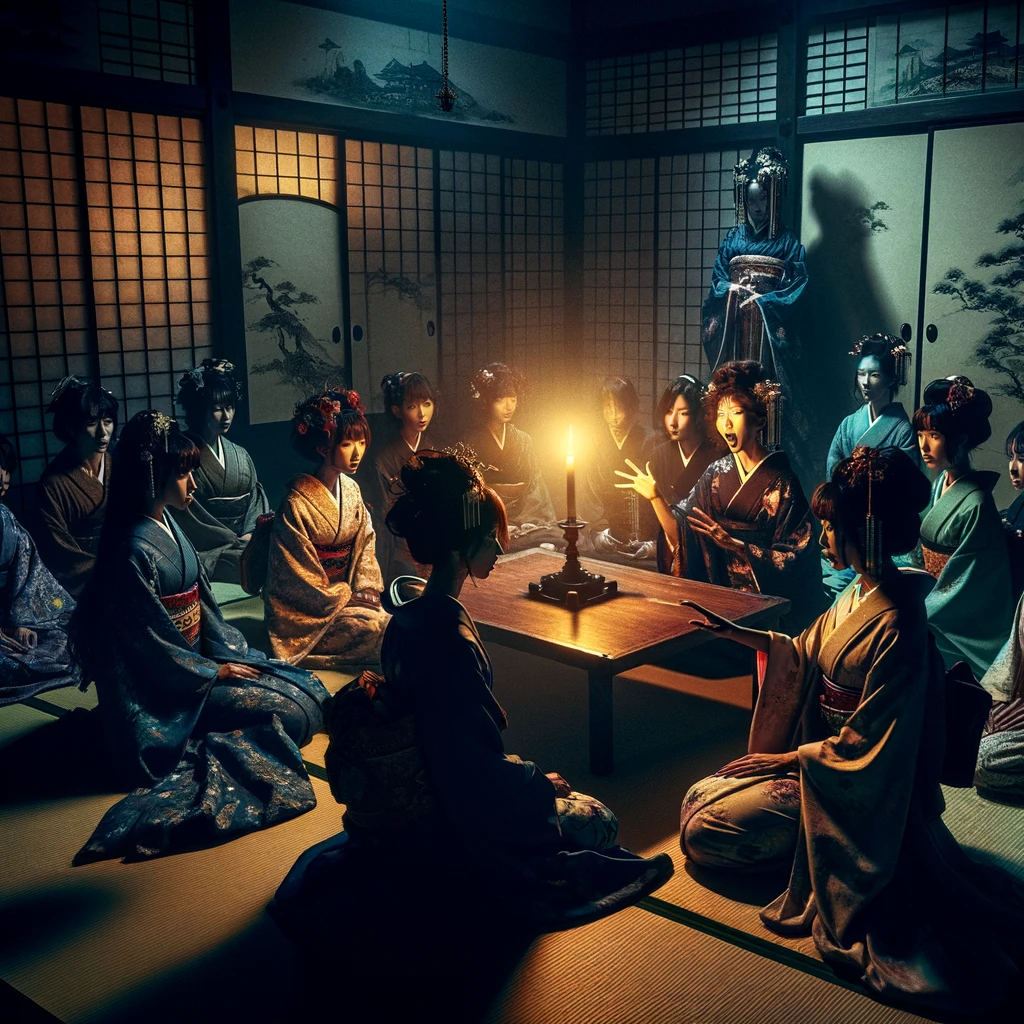
Can love be so strong as to destroy a person from the inside? "Botan Dōrō" presents us with a story of love that knows no bounds, not even those separating life from death. But what happens when obsession becomes greater than the life of the lover itself? Prepare for a tale where love transforms into a deadly trap, and the glow of the peony lantern leads not to salvation, but to destruction. Japanese Kaidan stories are never naive or light.
The Trio of Kaidan – Tales of Ghostly Women
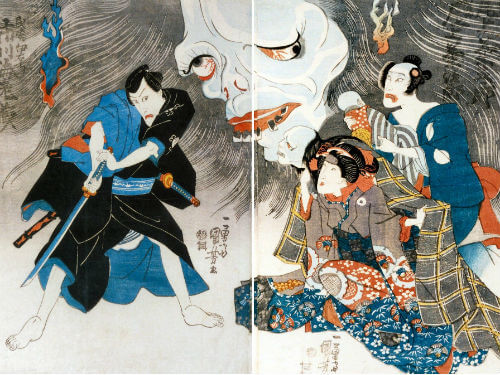
Among the multitude of kaidan stories, three stand out, forming the unofficial "Trio of Kaidan" (日本三大怪談, Nihon san dai kaidan, The Three Great Japanese Ghost Stories), which includes the most famous and influential Japanese horrors about demon-women. These stories tell of the spirits of women whose tragic and often bloody life stories compose grim, yet fascinating narratives, full of emotional depth and moral complexity.
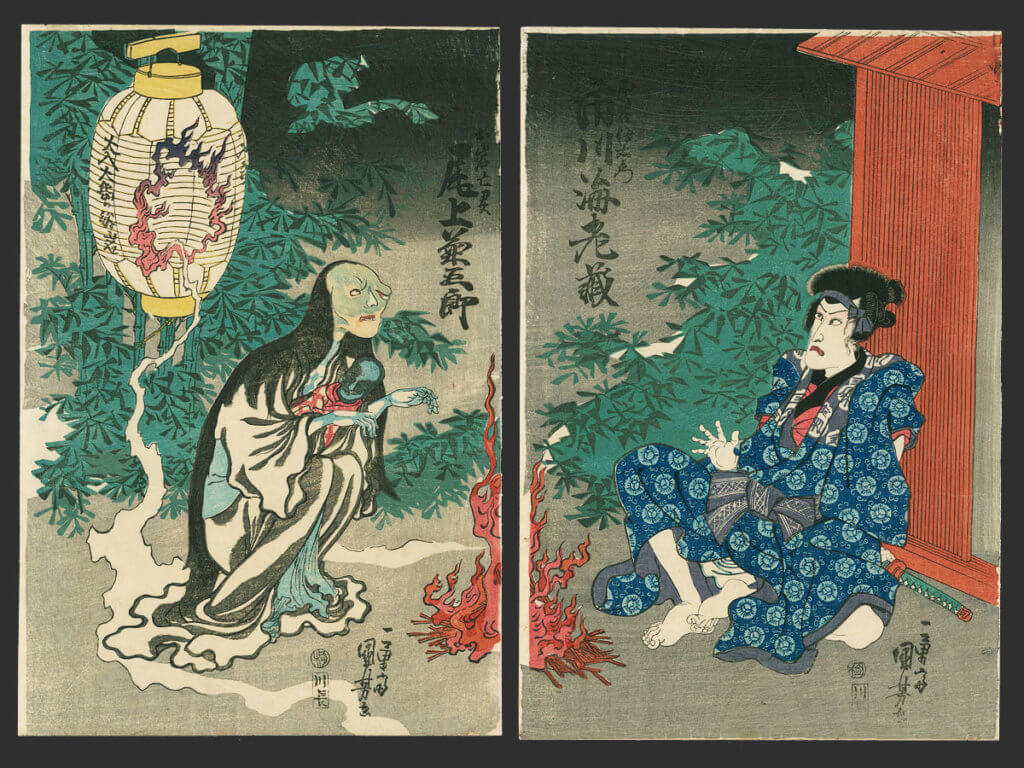
Focusing on the story of Otsuyu, we will delve into one of the most touching and symbolic kaidan tales, showcasing above all the complexity of human emotions and the inherent longing for love.
The Origin of the Legend
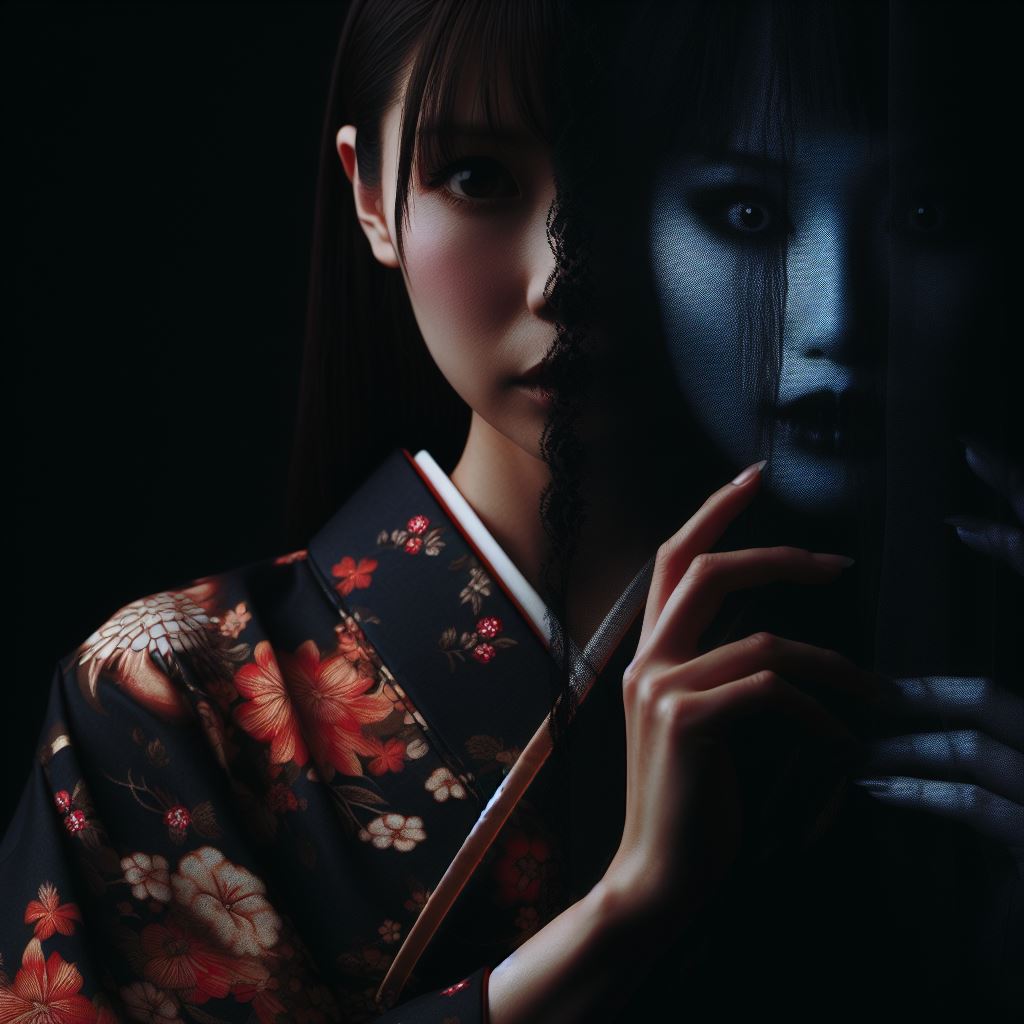
In Japan, the story of "Botan Dōrō" gained popularity during the Edo period (1603-1868), a time when ghost stories (kaidan) became widely popular in Japanese society. During this period, the culture of hyakumonogatari kaidankai - evenings during which terrifying stories were told, gradually extinguishing one candle or lantern after each story to increase tension and fear among participants - developed. "Botan Dōrō" was adapted from its Chinese prototype, transferring the action to a Japanese context and adding local nuances, which made it one of the icons of Japanese literature and art.
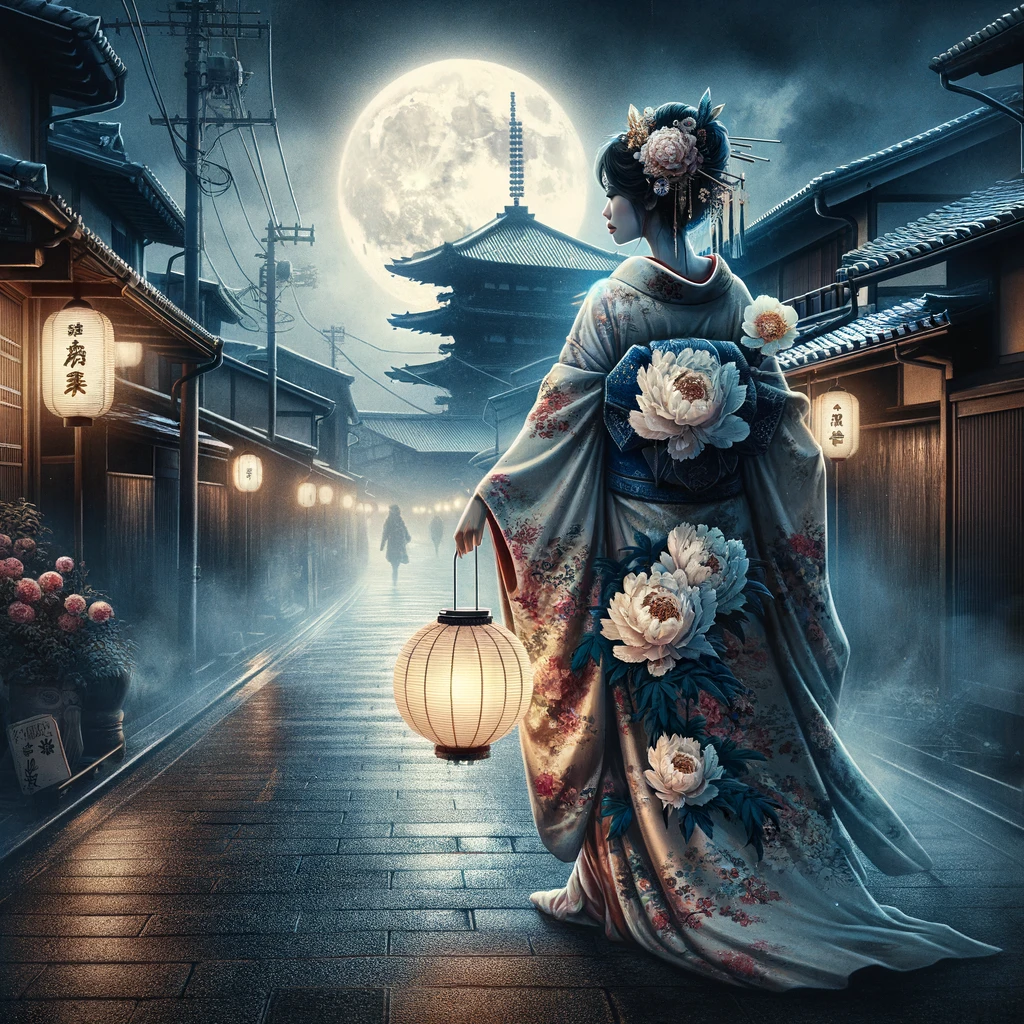
Character Description and Scene Setting
Ogiwara Shinnojō
Ogiwara Shinnojō (荻原新之丞) is a lonely, widowed samurai living in the shadow of his past, struggling with feelings of loss and loneliness. His character reflects typical themes of the Edo era such as melancholy and longing for lost love, while also embodying classic Japanese samurai virtues like loyalty, honor, and deep emotional sensitivity. He resides in the Nezu district of Edo, now Tokyo (the Nezu district is known for its picturesque streets, traditional temples, and the historic Nezu Shrine).
Otsuyu and Her Servant
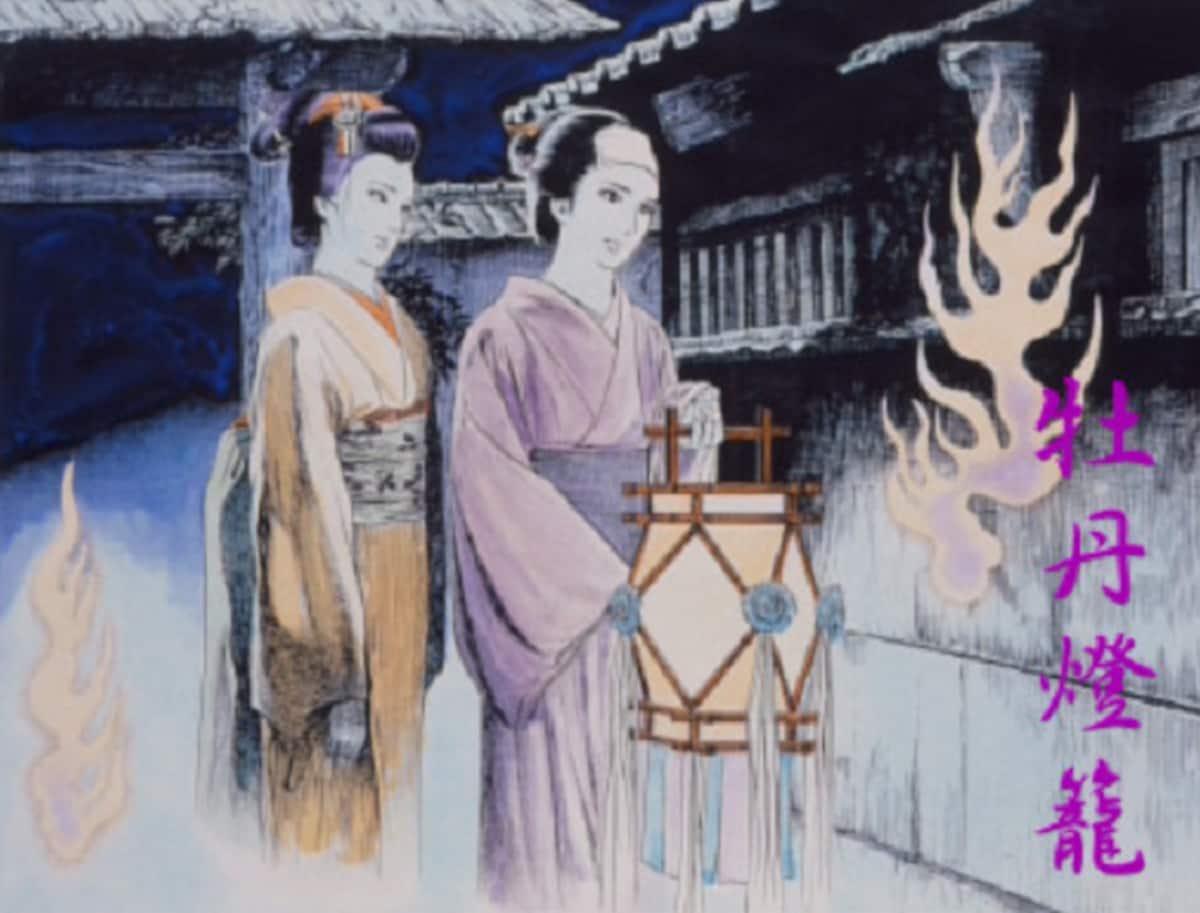
Otsuyu's servant, often depicted as a loyal and devoted companion, plays a significant role in the story, carrying the peony lantern that symbolizes both the path to her beloved and the sorrowful connection with the afterlife.
The Significance of the Peony Lantern
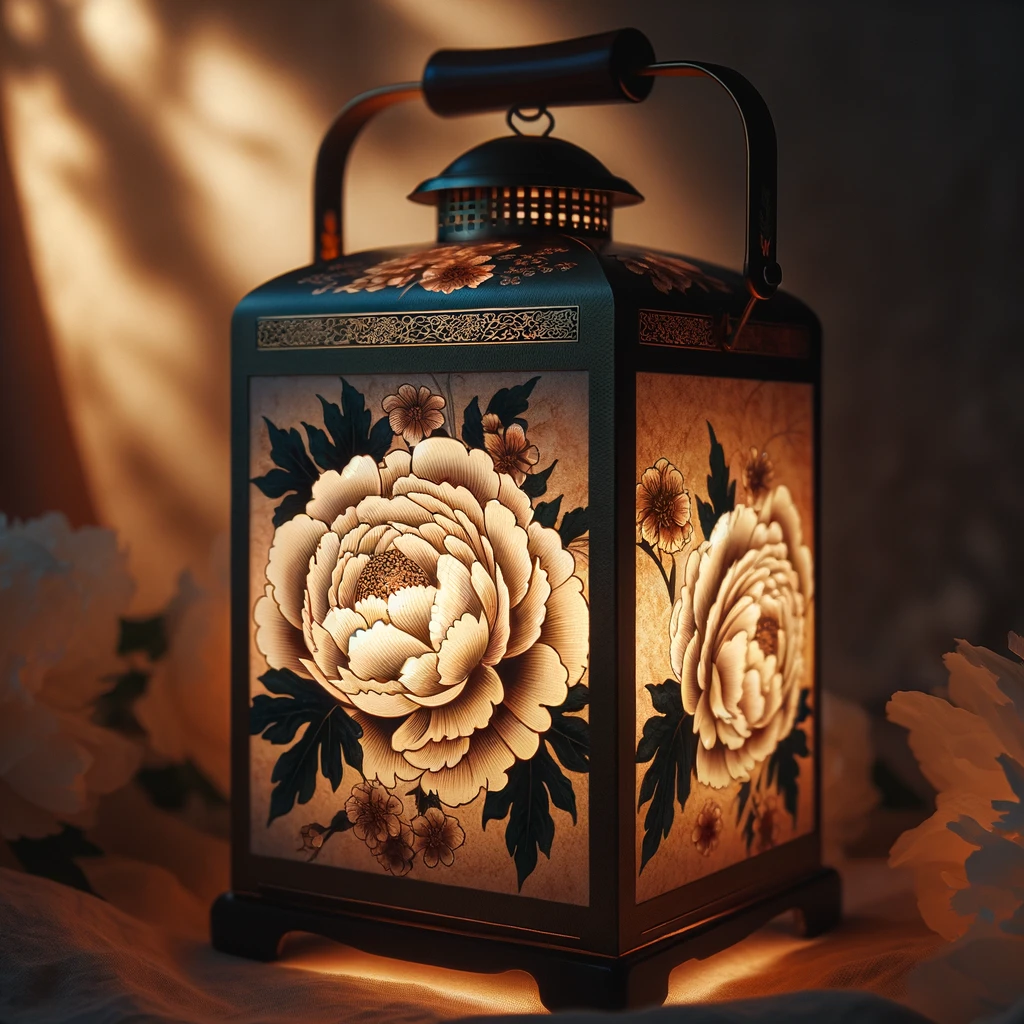
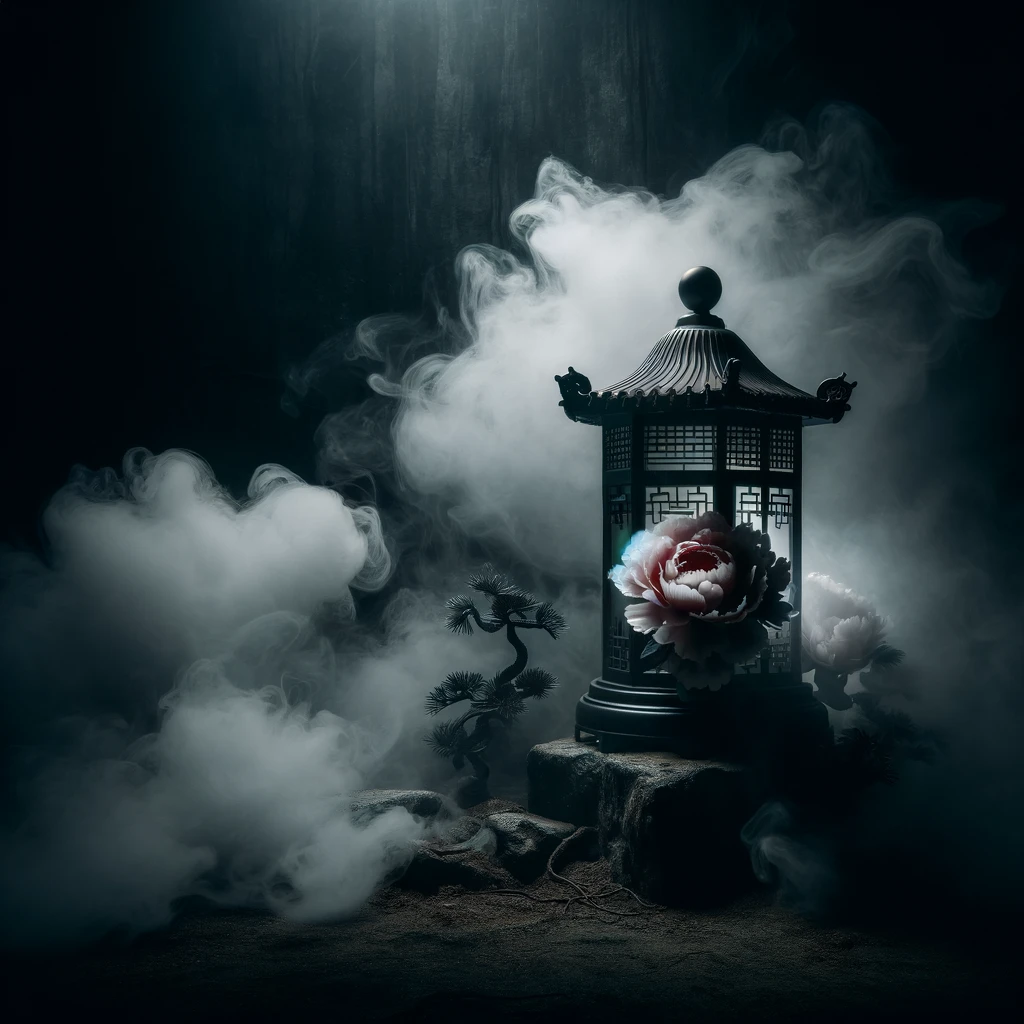
The Tale of the Peony Lantern
 Mysterious Encounter
Mysterious Encounter
On a warm, summer night, during the Obon festival (お盆 – a Buddhist festival honoring the dead, literally "tray"), when the streets of Edo come alive, summoning the spirits of ancestors to the world of the living, Ogiwara Shinnojō, lonely and lost in his thoughts, wandered through the quiet alleys of the Nezu district. The Obon festival, a time when spirits return to visit their families, was for him a period of reflection and longing for lost love.
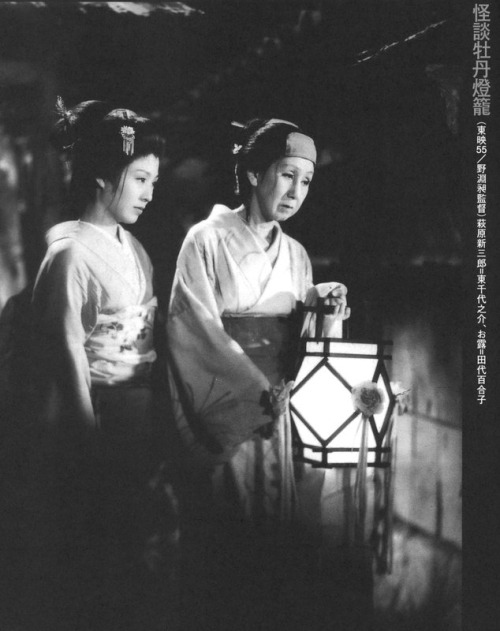
"Who are you, fair lady, who wanders the night with such an unusual lantern?" - Ogiwara asked, unable to take his eyes off her.
Otsuyu, with a slight smile that seemed to illuminate the night as mysteriously as her lantern, replied: "I am Otsuyu. This peony lantern guides me through these dark nights, just as it has led me to you now."
Nights Filled with Passion
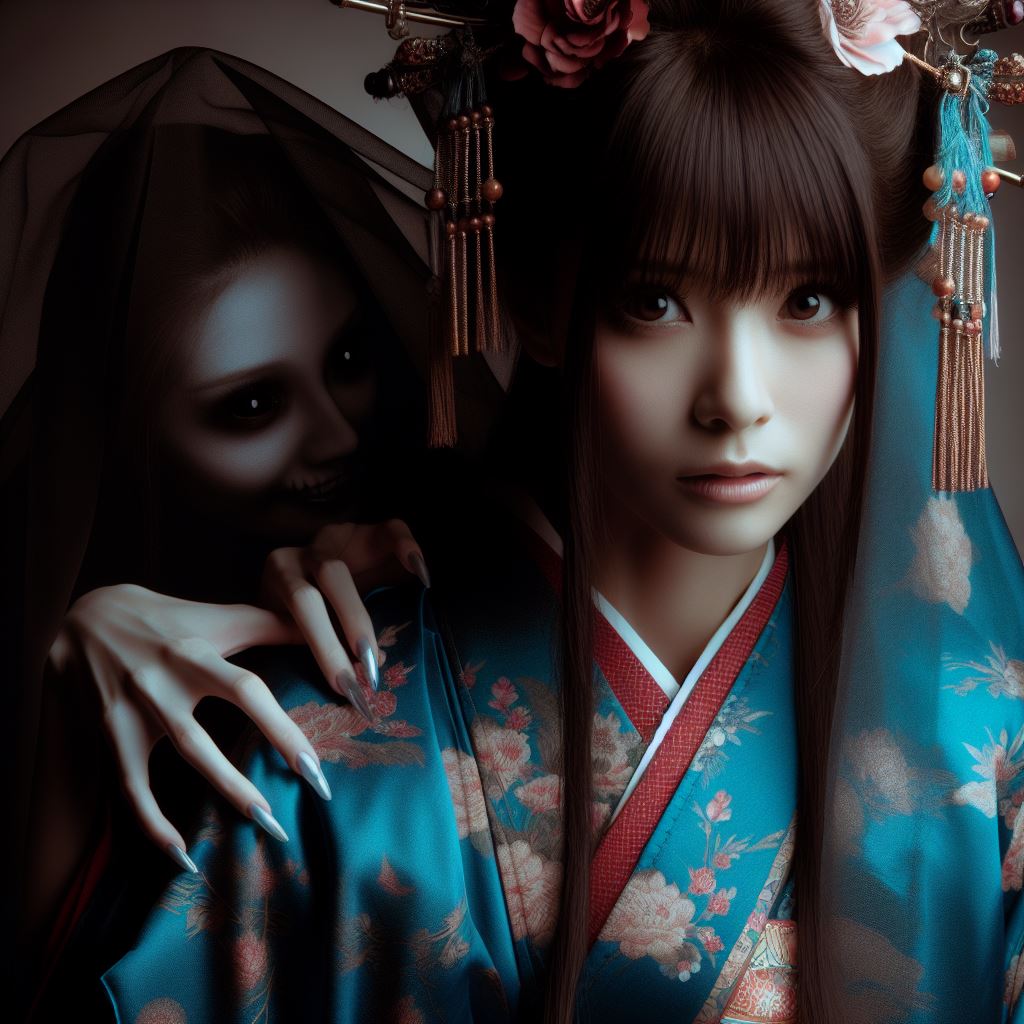
In these meetings, Otsuyu never revealed her true nature. Her mystery and delicacy drew Ogiwara even closer, and the peony lantern, always present, seemed to be the guardian of their secret. Their love flourished at night, while the festivities of the Obon week echoed in the streets of Edo, but before dawn – Otsuyu left her lover.
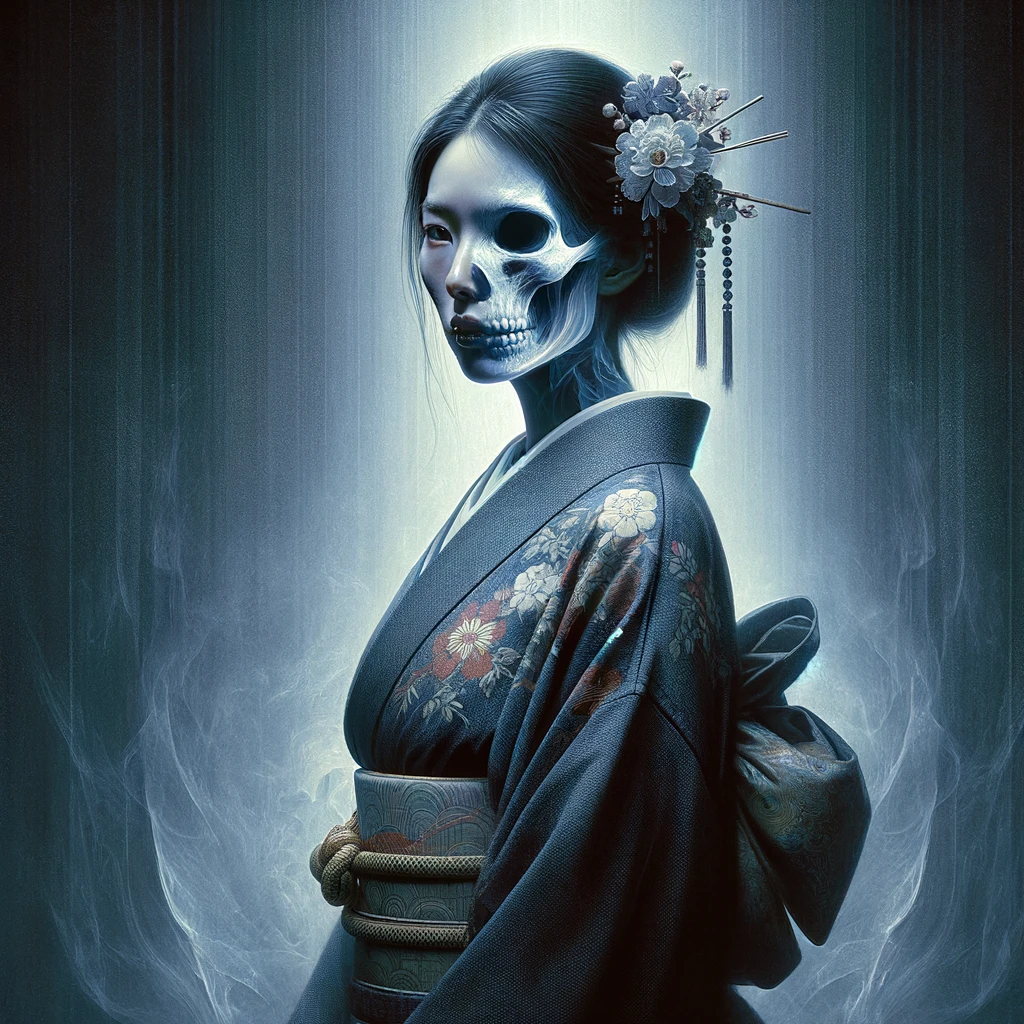
Danger
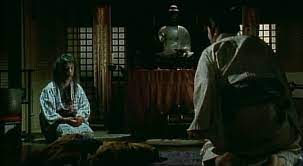
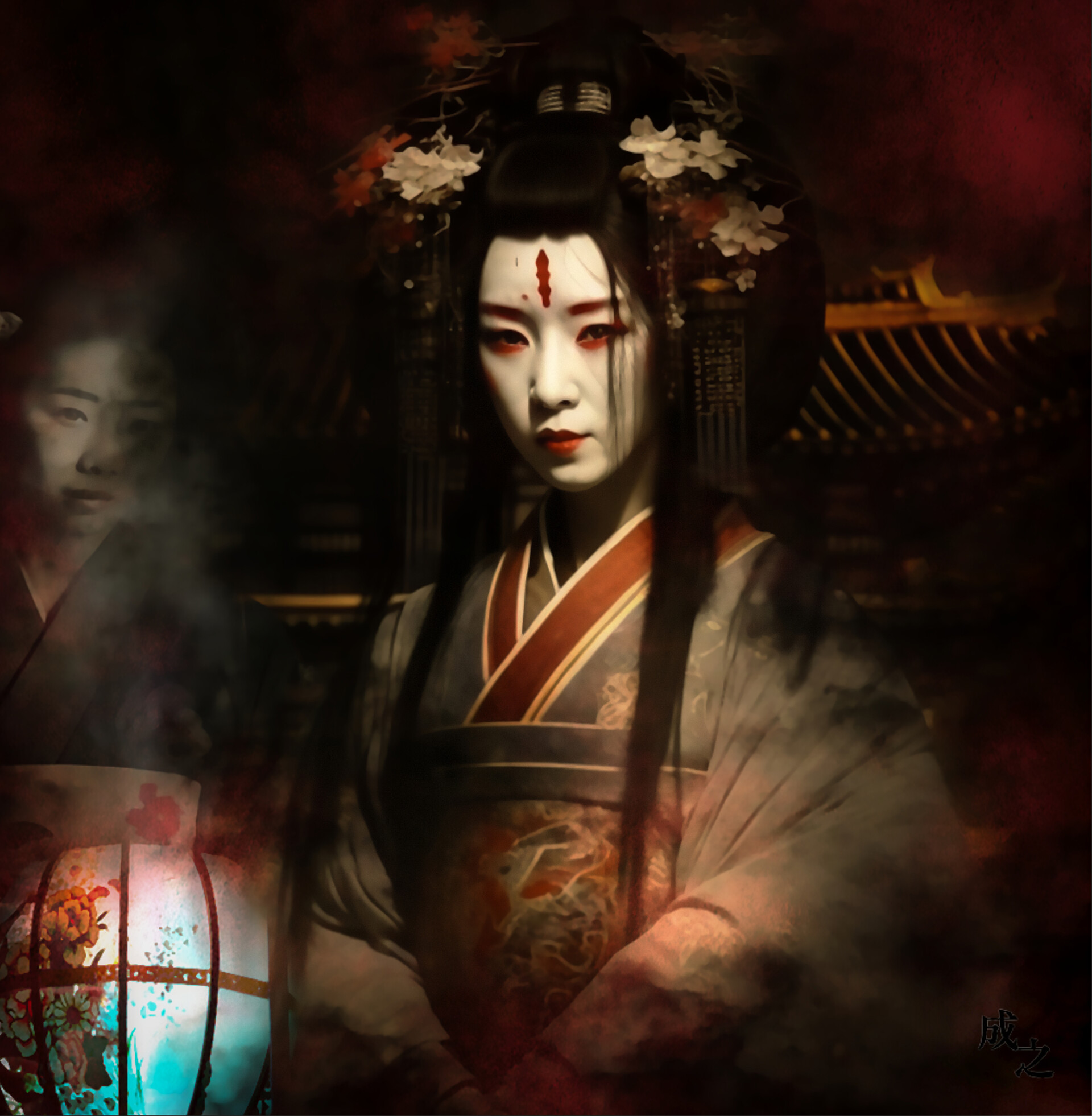
"Love knows no such boundaries, Shinnojō. I am here, with you, regardless of everything" - Otsuyu replies, her voice being a melody that both soothes and sends shivers down Ogiwara's spine.
The atmosphere of their meetings, over time, becomes denser and full of emotional tension. Ogiwara, though filled with love and longing, cannot rid himself of internal fears and doubts that begin to sprout in his mind. Now, a new, disturbing layer appears in their encounters - the awareness that something is not right, that their relationship, though beautiful, may have its dark side.
The Darkest of Nights
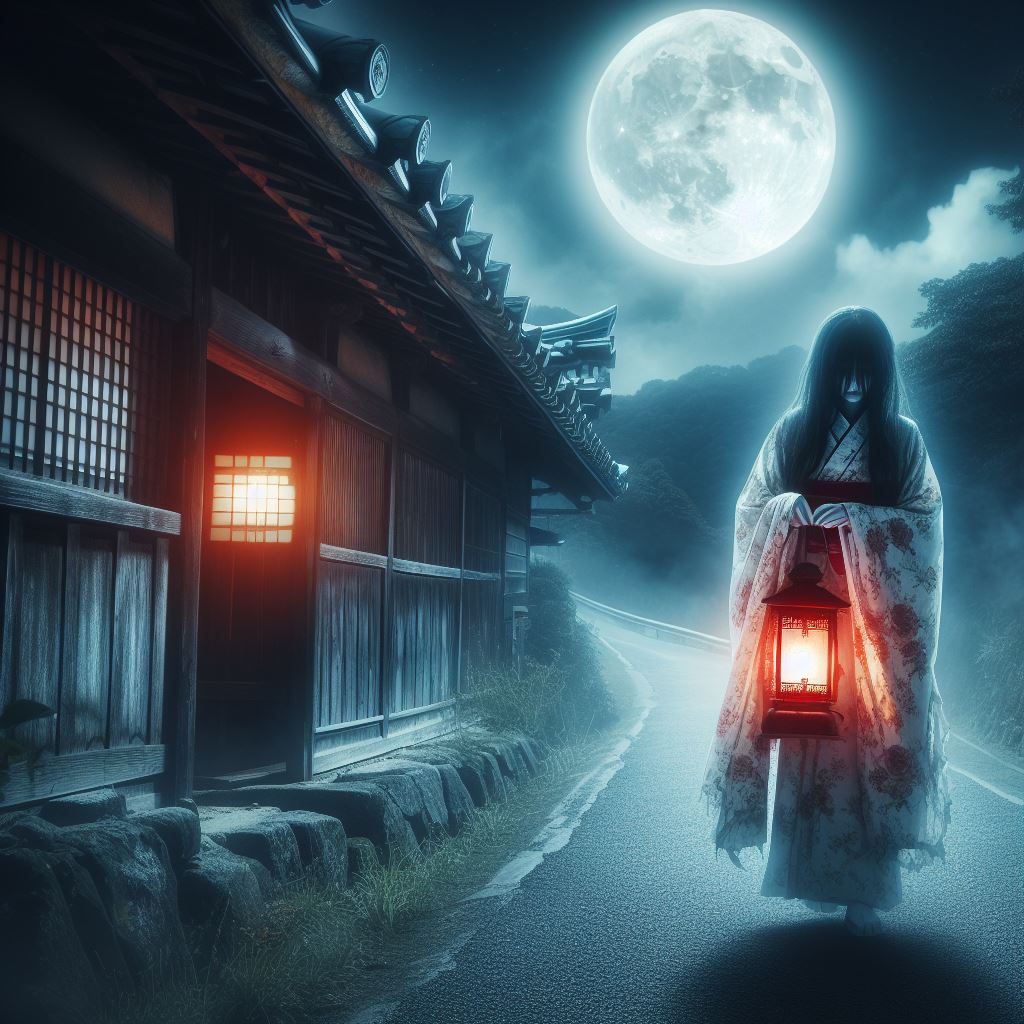
After another meeting, when conversations had quieted down, and mutual declarations of love had already been whispered in the shadow of the peony lantern, Ogiwara escorted Otsuyu to the door. He wanted to hold onto that moment, to extend every second spent with her. Then, instead of turning back and returning inside, he decided to follow her, driven by a vague premonition.
Otsuyu, always so mysterious, slowly moved away, her figure illuminated by the moonlight. Ogiwara, driven by an impulsive need to understand why he must live in secrecy, why their meetings must be hidden from the world, followed her hidden in the darkness of the night. What was to follow changed everything in his life.
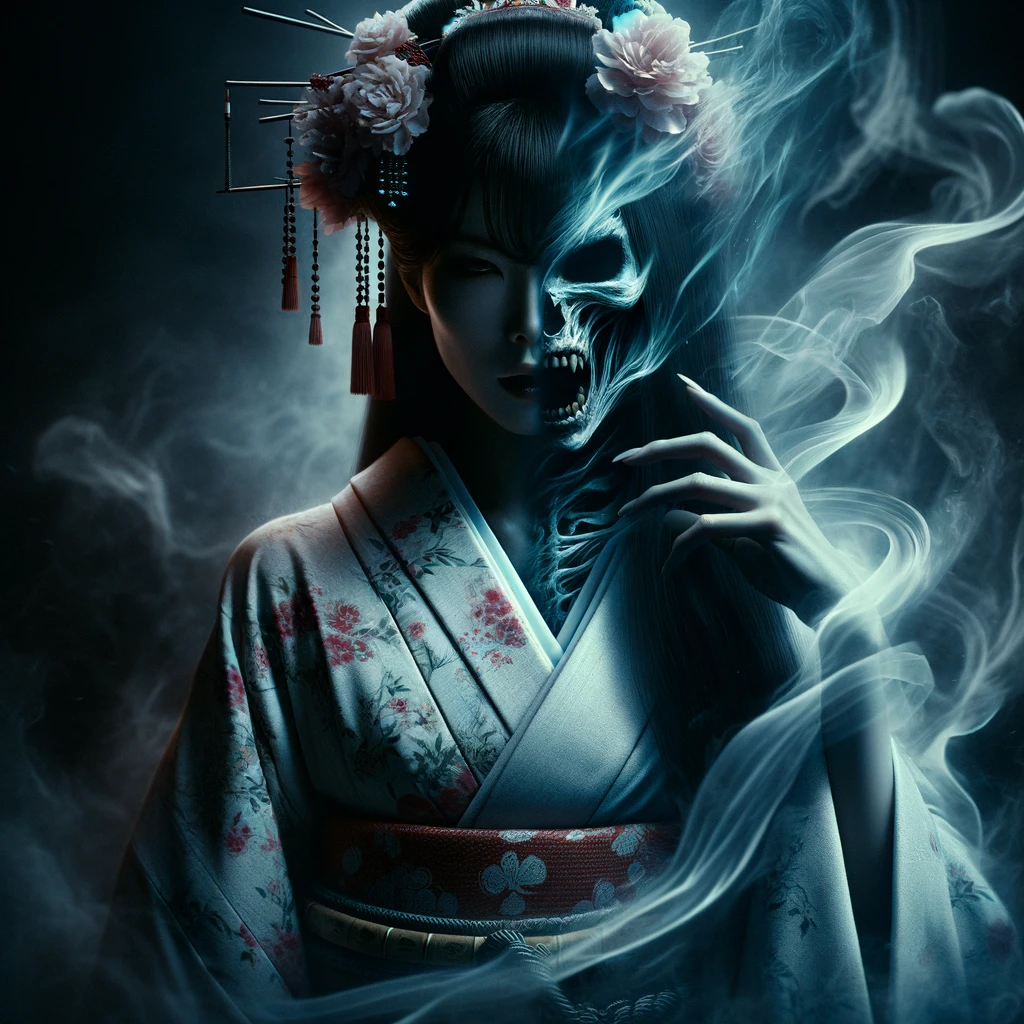
"Otsuyu... what happened? Who are you?" – he whispered, his voice trembling with unspoken fear.
Otsuyu, seeing that her lover sees her current form, with sadness in her eyes, which now shone with an unnatural glow, replied: "Shinnojō, I am a spirit. My love for you has crossed the boundary of death, but I cannot remain in the world of the living as you do."
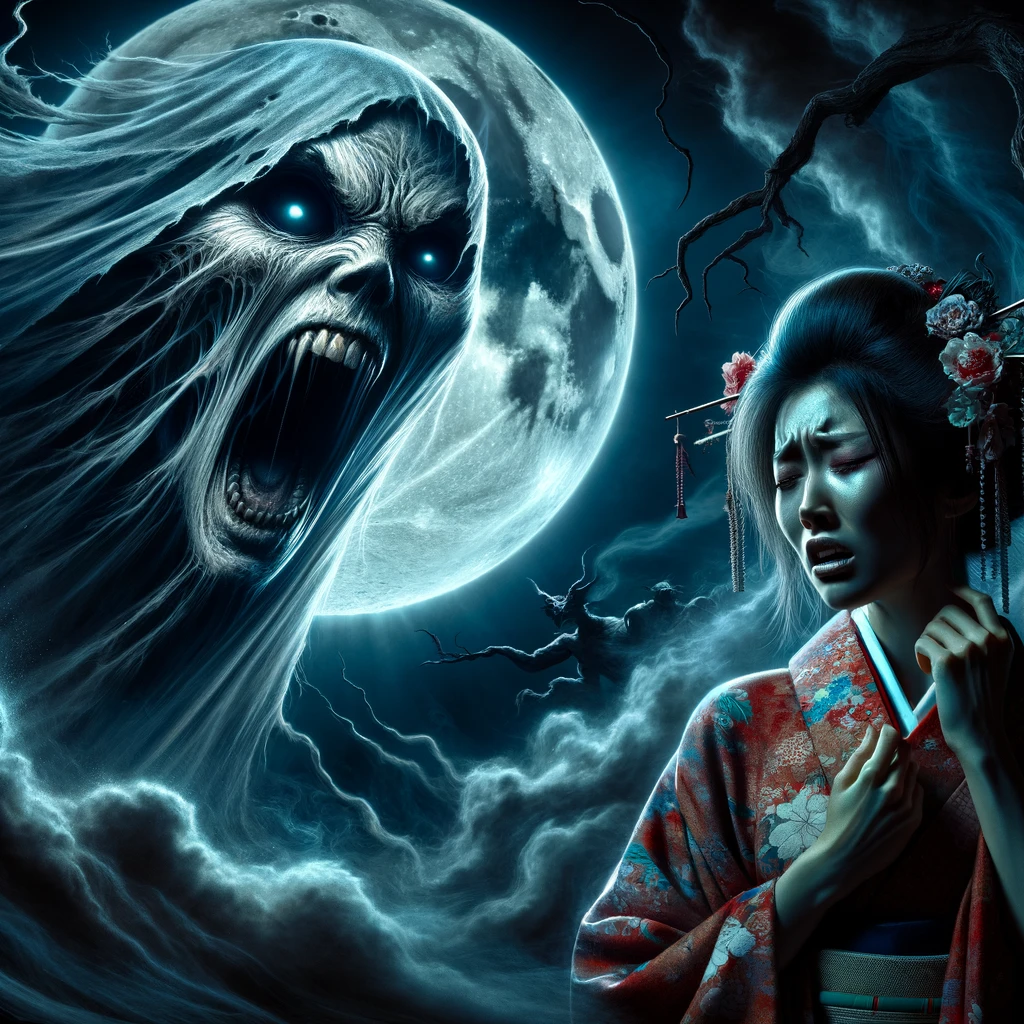
At that moment, when the truth about Otsuyu became clear, Ogiwara understood that the boundary between the world of the living and the afterlife is not only physical but also emotional. The love he felt for Otsuyu was now imbued with the awareness that they do not belong to the same world.
Despite the shock and pain that accompanied this realization, a glimmer of hope smoldered in Ogiwara's heart. The hope that love, stronger than death, would find a way to endure. But can love truly overcome death? Is Ogiwara ready to accept all the consequences of this extraordinary love?
Consequences of the Truth
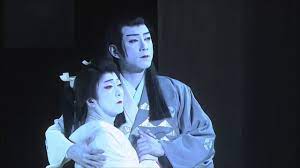
Ogiwara, faced with the horrifying truth, chooses love over all rationality, which ultimately leads to his downfall - symbolizing the eternal struggle between the desires of the heart and the inevitability of fate. His obsession removes from his mind thoughts of anything other than Otsuya, completely cutting him off from reality, and the debilitating passion exhausts his body, leading to collapse.
 The Morning After
The Morning After
The night that was to become their final meeting, Ogiwara and Otsuyu united in love, which was both the culmination of their feelings and the tragic end of their story. As dawn broke, and the first rays of sunlight illuminated the city park, Ogiwara was found lifeless, lying naked on the cold ground of the park, clutching a clump of sand to his chest.
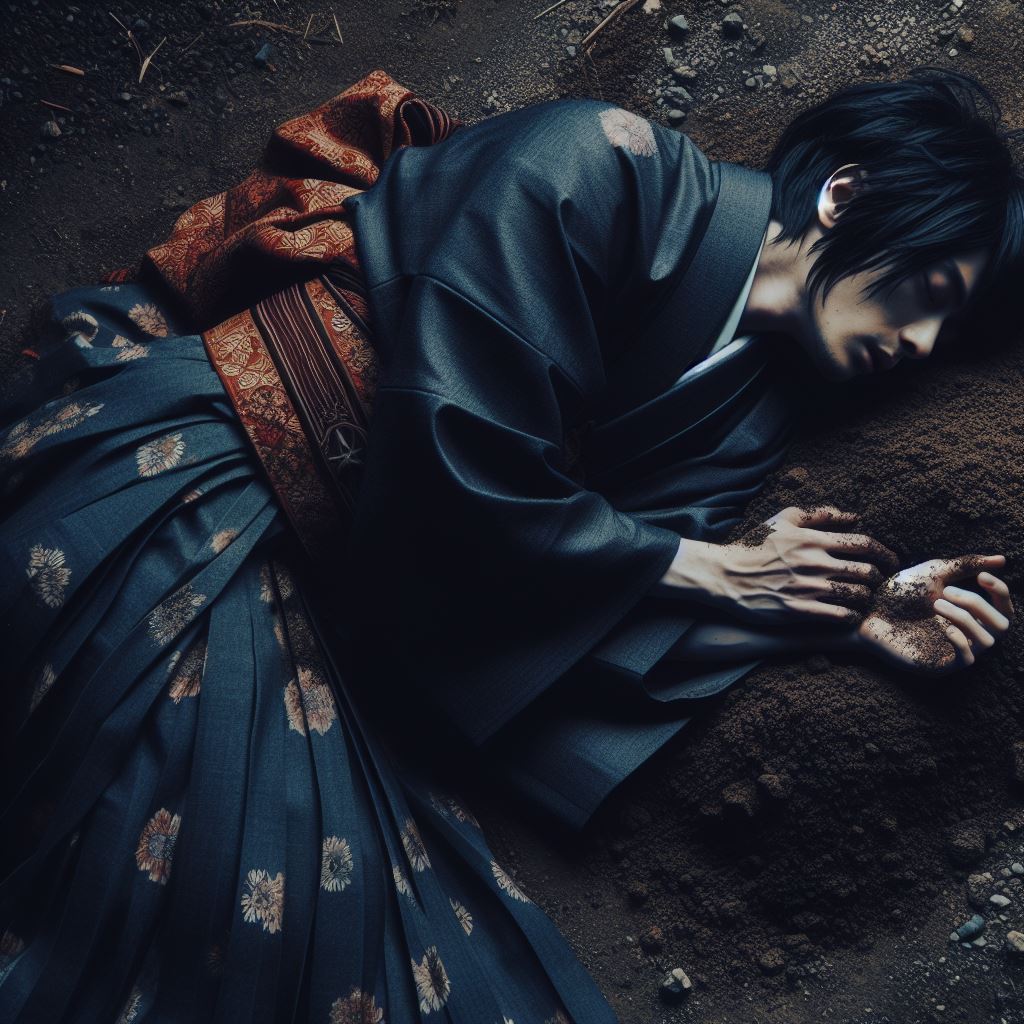
The Legend of the Peony Lantern in Culture
 Literature
Literature
The story of "Botan Dōrō" has found its place in world literature thanks to adaptations, the most significant of which is by Lafcadio Hearn. Hearn, a Greek-Irish writer who settled permanently in Japan, published his version of this story in the collection "Kwaidan: Stories and Studies of Strange Things" (1904). His adaptation, though loosely based on the original Japanese legend, contributed to the popularization of the "Botan Dōrō" story in the West, presenting it as the quintessence of the Japanese gothic novel (horror).
 Kabuki and Noh Theater
Kabuki and Noh Theater
In Japan, the story of "Botan Dōrō" has been adapted in both kabuki and noh theater. Theatrical adaptations often focus on the visual presentation of the story, using masks, costumes, and music to convey emotional depth and supernatural aspects of the story.
In Pop Culture
The motif of Otsuyu has been adapted into various forms of media, from films to manga and anime, demonstrating its lasting impact on Japanese and global pop culture.
▫ Films: One of the most well-known adaptations is the Japanese film "Botan Dōrō" (1968), which presents the story of love and fear, faithfully reflecting the spirit of the original story.
 ▫ Manga and Anime: Many mangas and animes draw inspiration from the legend of Otsuyu, adapting its motifs to new, often contemporary contexts. Examples include episodes in series such as "GeGeGe no Kitarō," where motifs of folk tales are often explored. Other animes that also draw from this legend may include: Ayakashi – Samurai Horror Tales, or Mononoke (not to be confused with “Princess Mononoke”, which is something different).
▫ Manga and Anime: Many mangas and animes draw inspiration from the legend of Otsuyu, adapting its motifs to new, often contemporary contexts. Examples include episodes in series such as "GeGeGe no Kitarō," where motifs of folk tales are often explored. Other animes that also draw from this legend may include: Ayakashi – Samurai Horror Tales, or Mononoke (not to be confused with “Princess Mononoke”, which is something different).
Why the Story Remains Popular
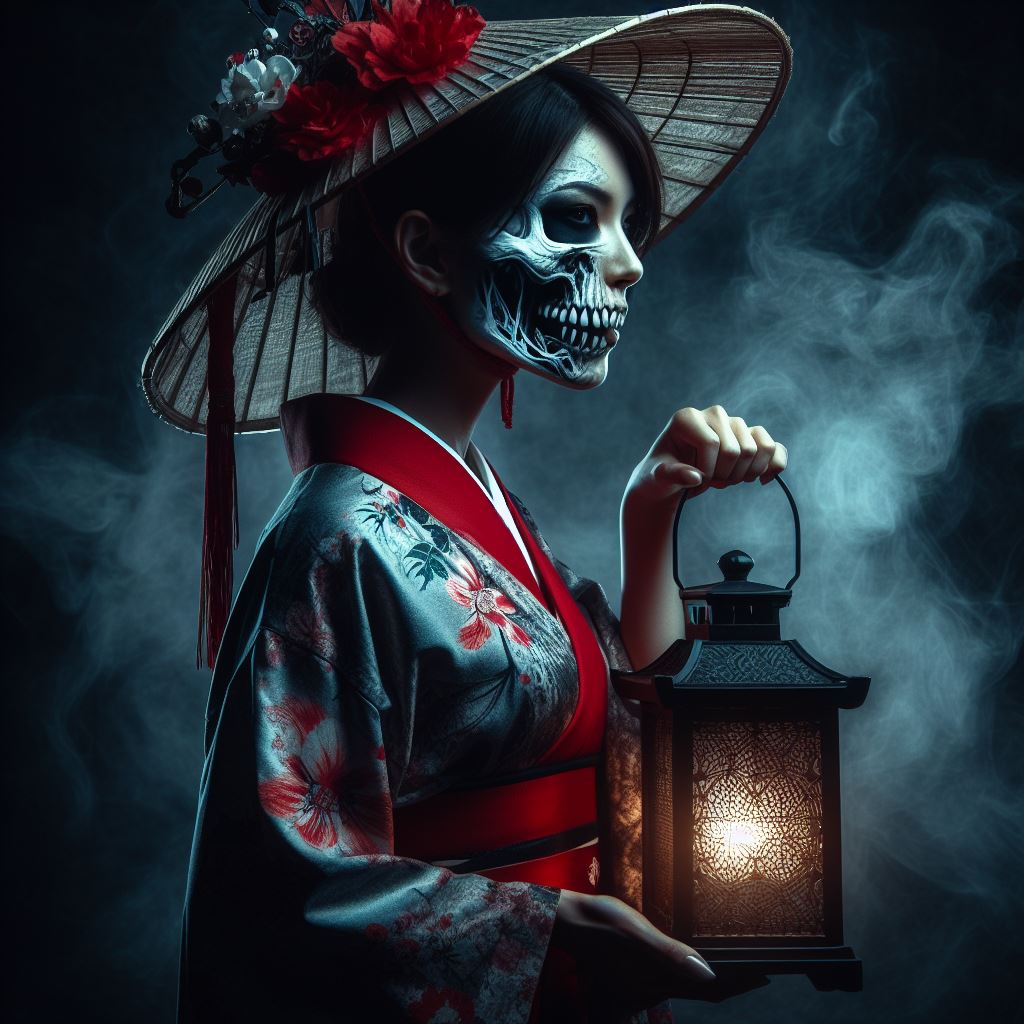
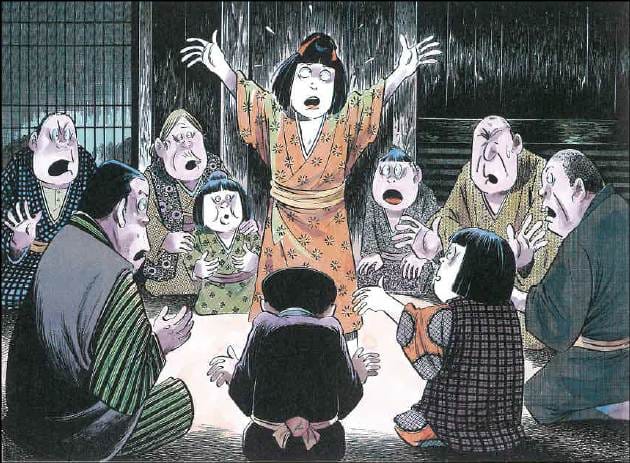
>>SEE SIMILAR ARTICLES
Shintoism at the Heart of Manga and Anime: The Profound Mark of Tradition in Japanese Pop Culture
Isekai in Anime: Boundless Fantasy
The Aokigahara Suicide Forest: What Secrets Do the Silent Trees Guard?
Extraordinary and Bizarre World of Kami: An Overview of Deities in Japanese Mythology
Yōkai and Kami: A Bestiary of Mythological Creatures of Japan in Anime
"Strong Japanese Women"
see book by the author
of the page
未開 ソビエライ
An enthusiast of Asian culture with a deep appreciation for the diverse philosophies of the world. By education, a psychologist and philologist specializing in Korean studies. At heart, a programmer (primarily for Android) and a passionate technology enthusiast, as well as a practitioner of Zen and mono no aware. In moments of tranquility, adheres to a disciplined lifestyle, firmly believing that perseverance, continuous personal growth, and dedication to one's passions are the wisest paths in life. Author of the book "Strong Women of Japan" (>>see more)
Personal motto:
"The most powerful force in the universe is compound interest." - Albert Einstein (probably)
Mike Soray
(aka Michał Sobieraj)
未開 ソビエライ
An enthusiast of Asian culture with a deep appreciation for the diverse philosophies of the world. By education, a psychologist and philologist specializing in Korean studies. At heart, a programmer (primarily for Android) and a passionate technology enthusiast, as well as a practitioner of Zen and mono no aware. In moments of tranquility, adheres to a disciplined lifestyle, firmly believing that perseverance, continuous personal growth, and dedication to one's passions are the wisest paths in life. Author of the book "Strong Women of Japan" (>>see more)
Personal motto:
"The most powerful force in the universe is compound interest." - Albert Einstein (probably)
Mike Soray
(aka Michał Sobieraj)
Write us...
Ciechanów, Polska
dr.imyon@gmail.com
___________________
inari.smart
Would you like to share your thoughts or feedback about our website or app? Leave us a message, and we’ll get back to you quickly. We value your perspective!

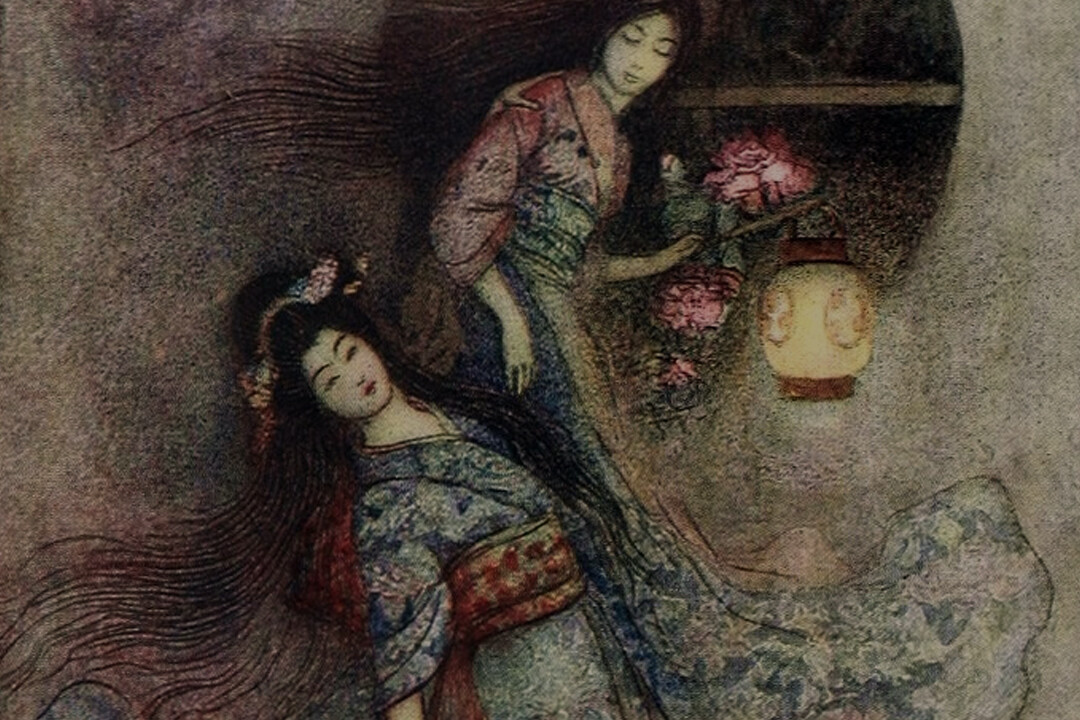 Mysterious Encounter
Mysterious Encounter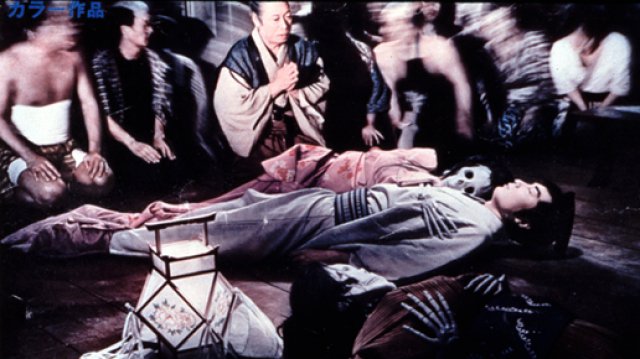 The Morning After
The Morning After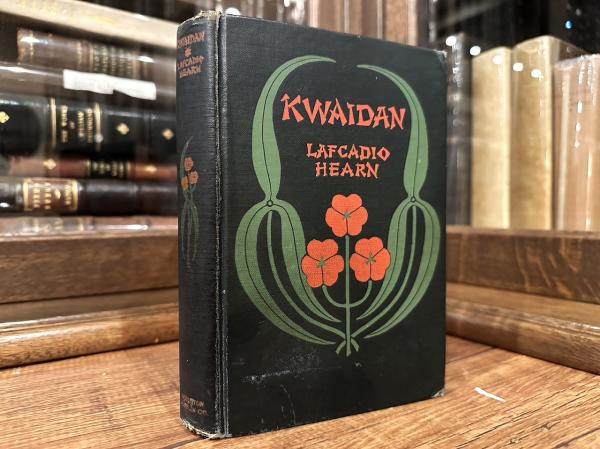 Literature
Literature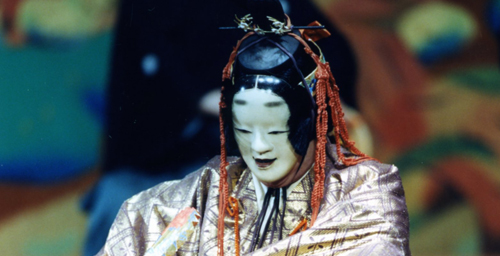 Kabuki and Noh Theater
Kabuki and Noh Theater ▫
▫ 
